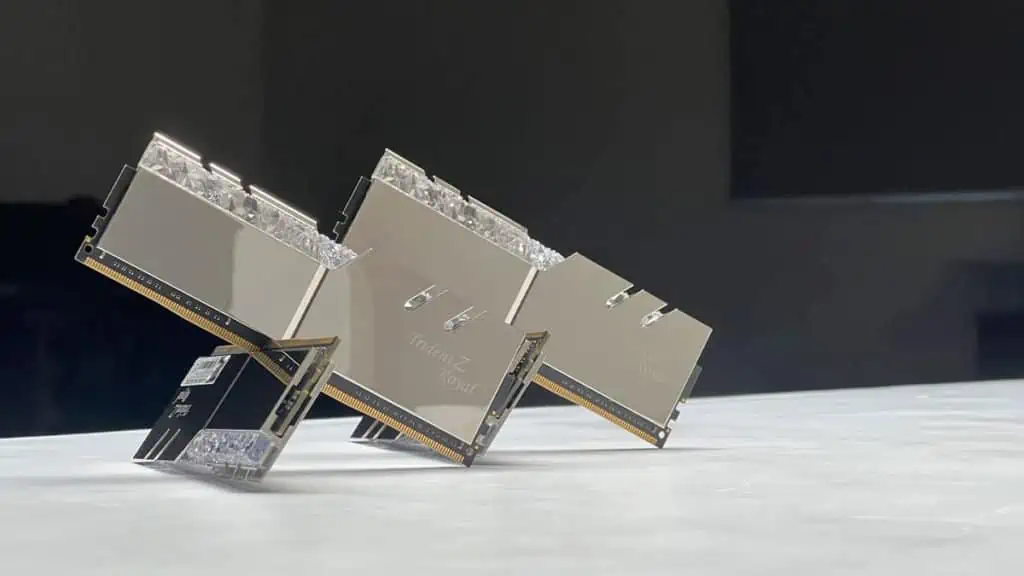RAM mainly affects performance if the system is running out of it. The entire PC starts to slow down when it is low on memory.
Besides capacity, RAM with appropriate speed, latency, and memory rank will boost your system’s performance. Furthermore, memory stick alignment also plays a crucial role in making your system faster.
But this does not mean you can add more and faster RAM to exponentially improve performance. RAM only improves performance when certain criteria are met.
To check the performance difference, I have done benchmarks on a setup with the following specifications.
- CPU: Ryzen 5000
- RAM: DDR4 8 GB
This gave me accurate data on how RAM affects performance. So let’s look at these aspects and how they affect overall system performance.
RAM Capacity And Performance
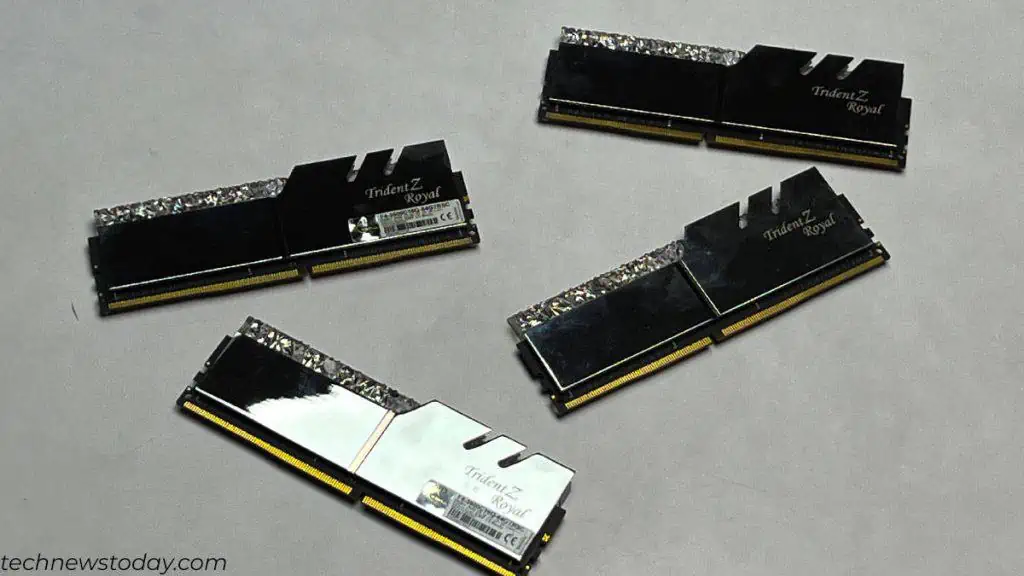
Your system will work fine as long as the memory usage stays below the maximum memory limit. When the system reaches close to maximum memory usage, you will begin to notice lags and stutter.
Once it exceeds total RAM usage, the OS will resort to a page file to store application files. This bottlenecks the CPU and the GPU.
This is why a system low on RAM slows down when you run multiple applications simultaneously. If your system is constantly low on memory, increasing RAM will get rid of any bottlenecks, making your system perform better.
So what does this mean? More RAM allows you to run multiple applications simultaneously. If you are gaming, you will get stable frame rates.
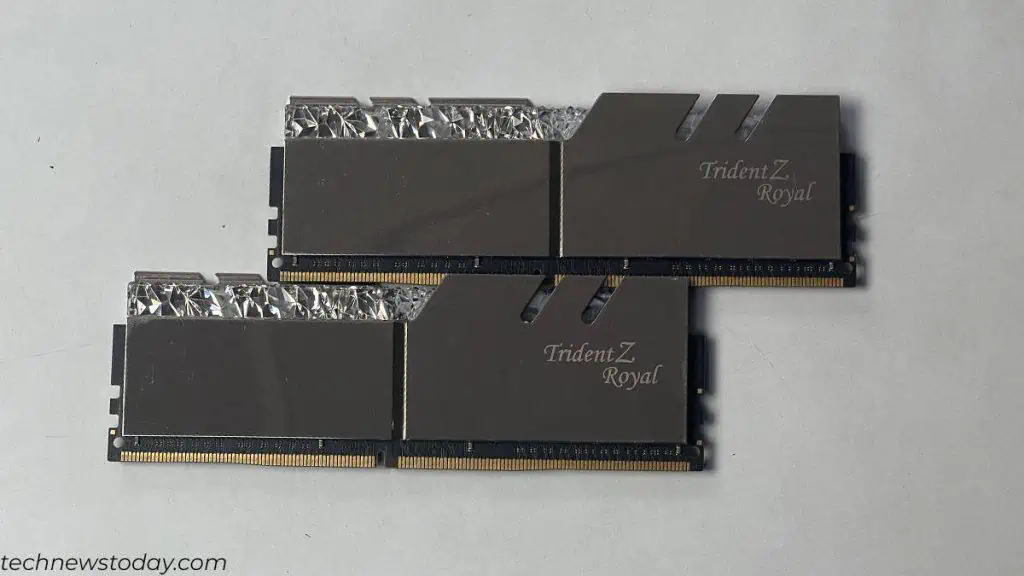
Remember that increasing RAM will not improve your average FPS. Your average FPS remains the same. However, you will see significant improvement in 1% and 0.1% low FPS in games.
This does not mean, you can double your memory capacity and expect double performance. RAM has a diminishing return when it comes to capacity.
If a system uses a maximum of 12 GB memory, a 16 GB memory will suffice. In this case, upgrading to 32 GB RAM does not affect performance.
Let’s consider an analogy,
Imagine your RAM as a workbench. A small workbench means low storage for things that you require constantly. Larger workbenches allow you to spread out components and access them with ease.
Now, if you already have a large workbench, upgrading it is not going to affect your performance.
Frequency & Latency Impact on Performance
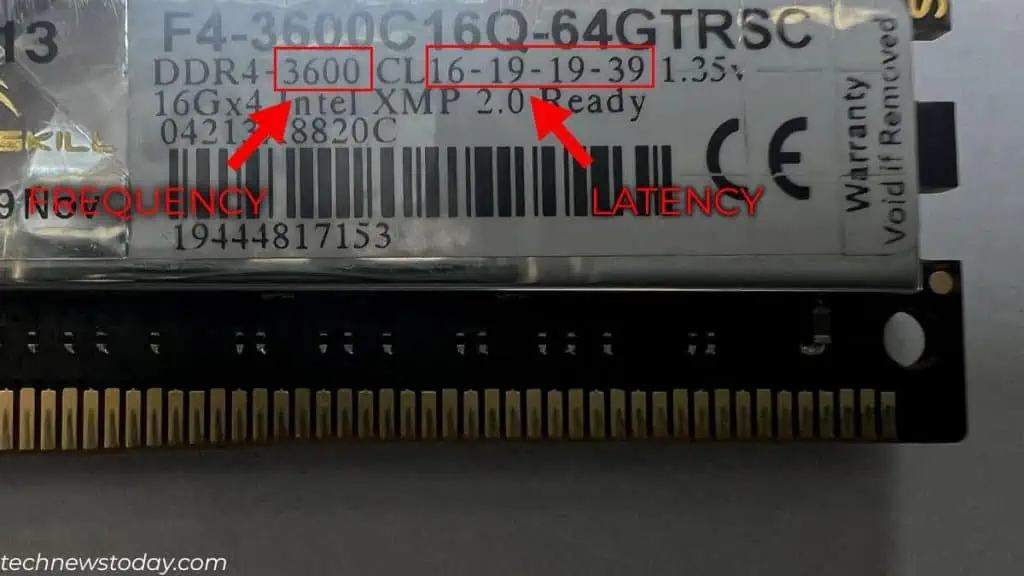
Another aspect of RAM that directly affects performance is its frequency or data transfer rate. RAM frequency is the rate at which data transfers between RAM and the CPU.
It is measured in MT/s (Mega Transfers per Second). Higher frequency means the CPU can access faster data transfer, process it, and quickly give an output.
You can especially notice the performance difference when running a CPU-intensive application. In these applications, data constantly transfers between the CPU and RAM.
To give you a general idea, I ran GeekBench twice on my office setup. On the first run, the RAM speed was set to 2666 MT/s. On the second run, RAM speed was at 3200 MT/s (XMP Enabled). These are the system specifications:
- CPU: Ryzen 7 5800G 3801 MHz (8 cores)
- RAM: DDR4 8GB Single Channel
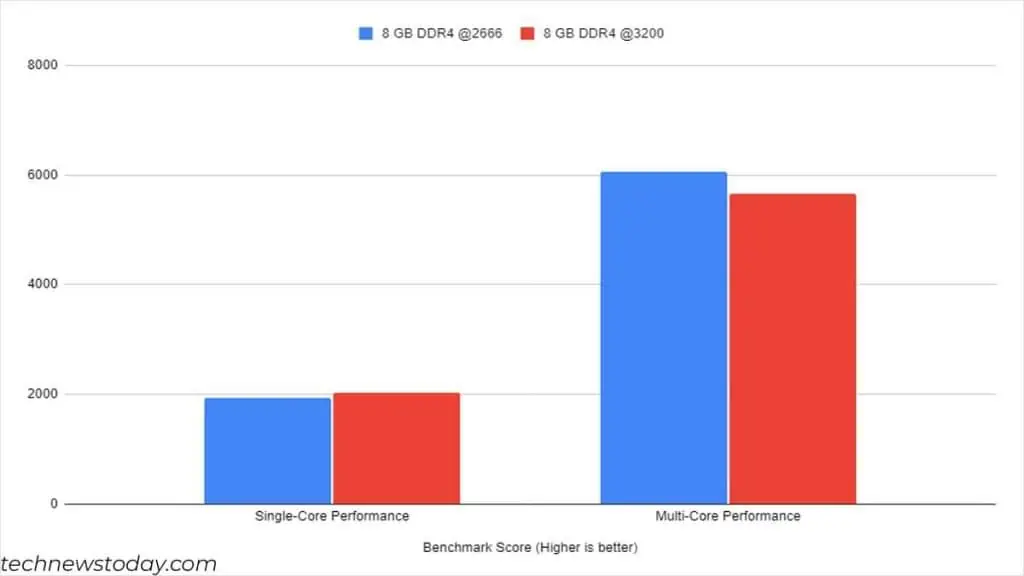
Here you can mainly see the difference on Single core. The CPU score at RAM speed 2666 MT/s is 1940, and at 3200 MT/s is 2004.
The differences might be more noticeable in other CPU-intensive applications.
In this test, the performance decreased on a multi-core score. This is likely due to the system running on a single channel. Multi-core CPU performance will increase if the system is in dual-channel mode.
Increasing RAM speed will significantly improve streaming, rendering, and high-resolution video editing experience.
As for gaming, you will see a slight improvement in your average FPS. CPU-intensive games like Valorant, and CS2 will also get an FPS boost.

This is why most users enable XMP or overclock RAM to improve its frequency and get a massive performance boost.
You can also install RAM that is faster than the CPU. But in this case, the RAM will run at the CPU’s maximum RAM speed.
If a CPU supports a maximum of 3200 MHz, RAM will run at 3200 MHz (XMP enabled). Even when you install a 4133 MHz RAM, it will run at 3200 MHz.
RAM Latency is the delay a memory module takes to retrieve data once it’s requested by the CPU. Higher latency means more delay. So, lower latency equals better RAM.
| Transfer Rate (MT/s) | CAS Latency (Clock Cycle) |
| 4133 | 19 to 22 |
| 3600 | 14 to 20 |
| 3200 | 12 to 18 |
Remember that higher-frequency RAM also has higher memory latency, which is not good. So you need to choose RAM that has a sweet frequency/latency ratio.
RAM Slots for Improved Performance
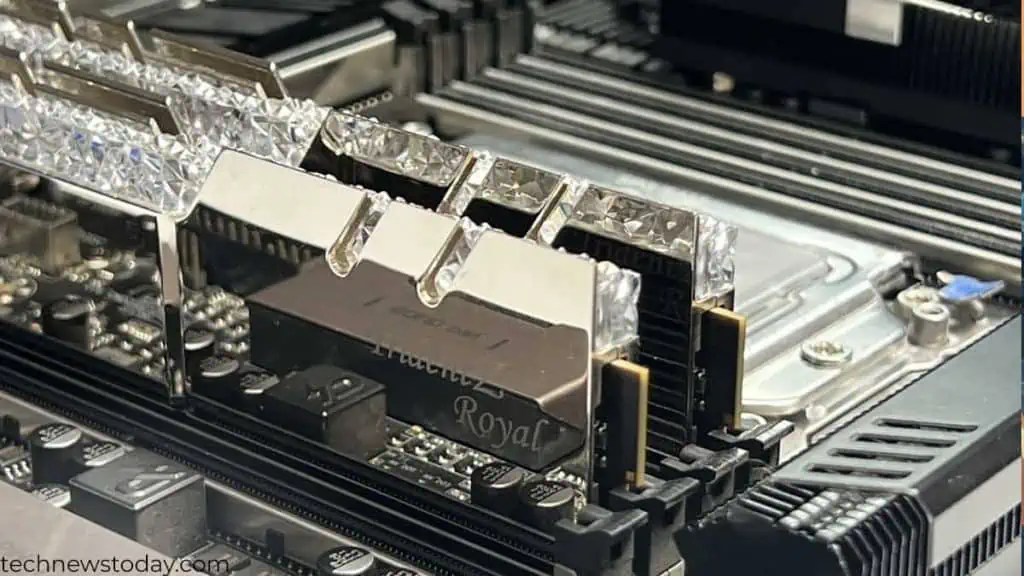
Aside from RAM type and specification, memory channel alignment affects memory bandwidth. This in turn affects performance.
Most consumer-level motherboards support dual-channel memory. This means the CPU has access to two memory channels.
So, if you install RAM on slot 1 of channels A and B, the CPU can access both simultaneously. This doubles the memory bandwidth and the transfer rate is also theoretically doubled.
Using just one stick of memory or using them in an incorrect slot runs the system on a single channel. This means the CPU can only access one memory module through a 64-bit bus.
This is a lot slower compared to dual-channel. So, I always recommend that you get two identical memory modules if you want that performance boost.
How Memory Rank Affects Performance
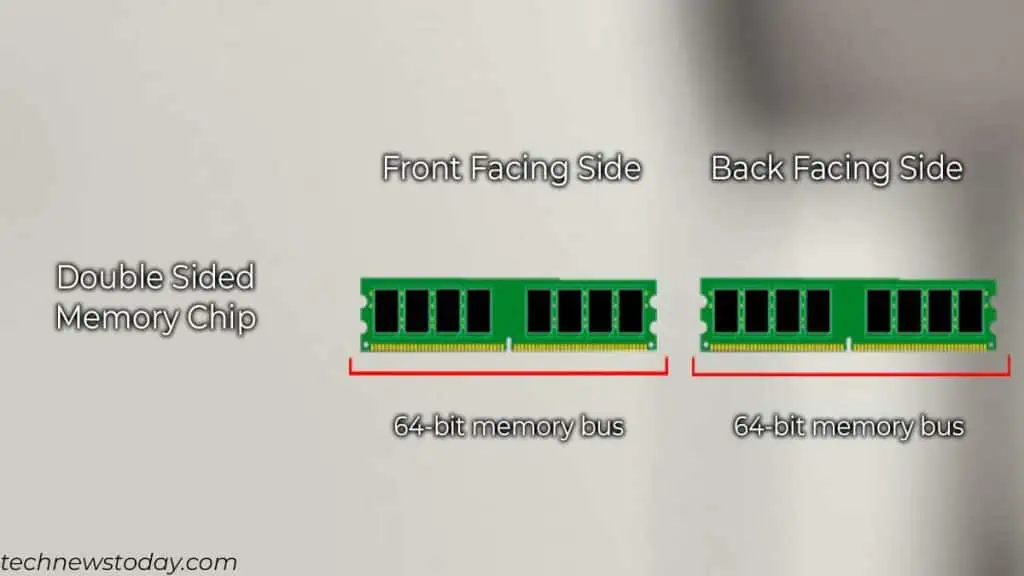
Memory Rank is the total number of memory buses a RAM uses at a time. More rank means a module can use multiple memory buses (64-bit wide) in interleaved mode. For the consumer level, you can mostly find single and dual-rank RAM.
On paper, dual-rank RAM performs better. Here, the CPU accesses data from a single stick using two memory buses. When one side of the memory chip fetches data, the CPU works on the other side using a second 64-bit bus.
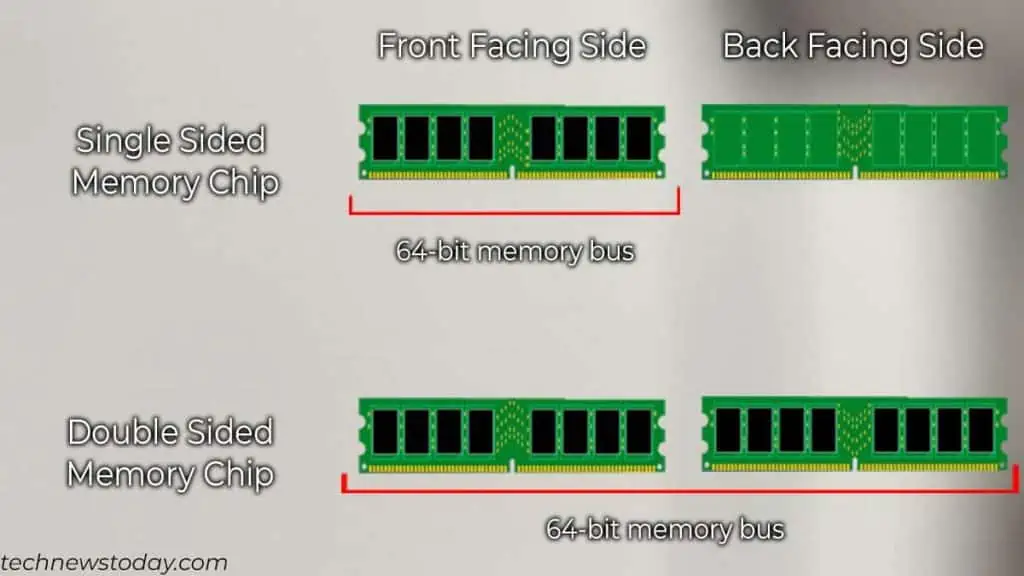
But talking about raw performance, a single rank is faster. This type does not switch through several memory ranks. It also runs at a low temperature, which is better for overclocking.
Dual-rank memory kits especially shine at workstations or server computers where the CPU handles numerous data.

